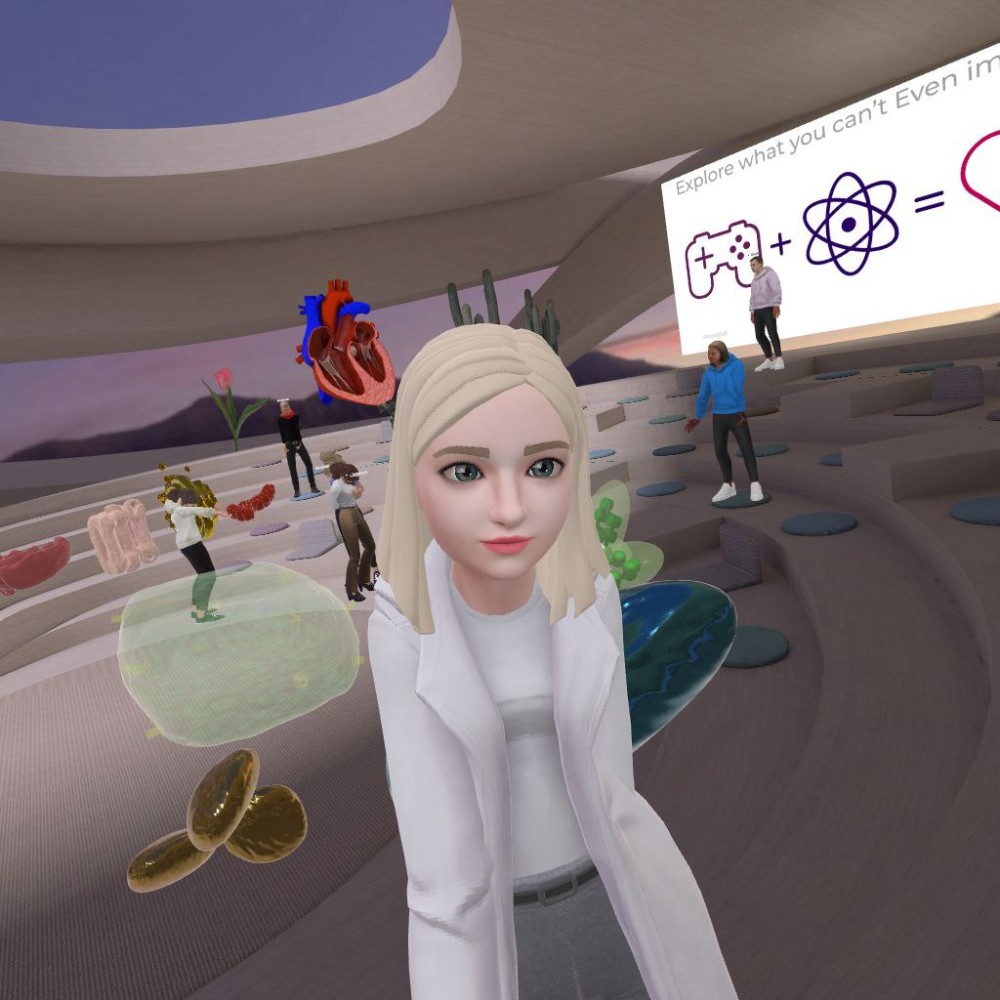

Here we talk about metaverse instruments for education which you can having only laptop or smartphone. Also check top AI instruments for educators (click).
The metaverse is a persistent shared virtual space where individuals use avatars to interact not only with the environment but also with each other in real-time.

The metaverse offers several compelling advantages for educational settings, serving as a powerful tool to enhance the learning experience. Here’s why:
Metaverse platforms can be accessed via virtual reality (VR) devices or using a computer, tablet, or smartphone, making VR headsets optional rather than mandatory.
Here, we’ll explore educational platforms within the metaverse that do not require VR devices:
Originally a popular entertainment platform among children, Roblox features games and experiences created by its users. While not initially designed for education, Roblox is expanding into educational content. It has received endorsements like the ISTE Seal of Alignment for educational applications.
Enrich your curriculum with 3D educational adventures that leverage students’ creativity, teamwork, and social engagement on the Roblox platform.
Check out educational games and experiences on Roblox here.
This approach demonstrates how the metaverse can be leveraged as a versatile educational tool, accessible across different devices and offering engaging learning opportunities beyond traditional methods.
Roblox Education offers a growing range of immersive learning experiences tailored to different grade levels and subjects. These experiences deliver curriculum-aligned, engaging, and game-based educational content to the global Roblox community through collaborations with educators and developers.
For example, in a game exploring the human immune system, students are immersed inside the body of a patient, witnessing firsthand how the immune system defends against pathogens. Players assume the roles of five types of white blood cells, learning their specific functions and collaborating to protect the host’s health.
On the other hand, UNIVERSE was specifically developed for educational purposes, distinguishing it from Roblox. This classroom tool enhances traditional face-to-face lessons by offering immersive experiences, making it ideal for both in-person and distance education settings. Teachers and students interact using customizable avatars.
UNIVERSE provides flexibility with teacher and student accounts, allowing educators to customize classroom layouts based on class size. Teachers maintain control over virtual lessons, switching between lecture and discussion modes. They can share screens, slides, or webcam feeds to guide lessons and create engaging breakout room scenarios to foster collaboration among students. Quick checks for understanding help assess student comprehension and identify areas needing further explanation.
UNIVERSE is compatible with Windows, ChromeOS, MacOS, and iOS, ensuring seamless operation across desktops, laptops, tablets, and smartphones without requiring additional accessories.
While UNIVERSE is a paid tool, you can explore its features with a free 7-day trial. Visit the UNIVERSE website to calculate software costs by specifying the required number of teacher and student accounts.
Spatial is a versatile metaverse initially designed for general use but adaptable for educational purposes. Users can customize their virtual environments by uploading media and 3D models, and they have access to an integrated Internet browser.
Teachers and students can collaborate in real-time within shared virtual spaces using Spatial. This platform is accessible through VR devices, as well as web and mobile versions.
Below is a replicated image from earlier in this article: XReady Lab biologist Sofiia Sosnovskaia captured a virtual selfie while conducting a demonstration lesson in a virtual classroom. In this demo, students (represented by their 3D avatars) explore topics such as cell structure and a model demonstrating the function of the human heart.

If you require high-quality educational content for uploading, including 3D models and curriculum-relevant tests, please contact us ⬇️⬇️⬇️
Free 3D models and test to upload in your Metaverse
While metaverses have primarily been associated with entertainment, there is a growing trend towards their application in education. As highlighted in this article, leveraging educational metaverses often doesn’t necessitate new devices like VR headsets. All that’s required are a computer and a smartphone.
Current tools offer substantial opportunities to enrich educational experiences, boost classroom engagement, and bridge the gap between distance and in-person learning. We anticipate rapid advancements in educational metaverses in the years ahead.
You may like it
Frequently Asked
We prodive VR biology, VR physics, and VR chemistry simulations. Please, check our catalog.
Please, fill the form to get demo labs for free.
Please contact our customer support service at support@xreadylab.com or book a call with the team to find out the conditions and book the VR class set up at your school.
Subscription to XReady Lab interactive VR labs. If you are a school, then you are also given access to the VR classroom system. VR class system helps you easily launch VR lessons for a large number of students, follow the experience of each student, as well as customise the content without developers.
We adhere to the world’s generally accepted recommendations and research. Our products are suitable for children from 12 years old.